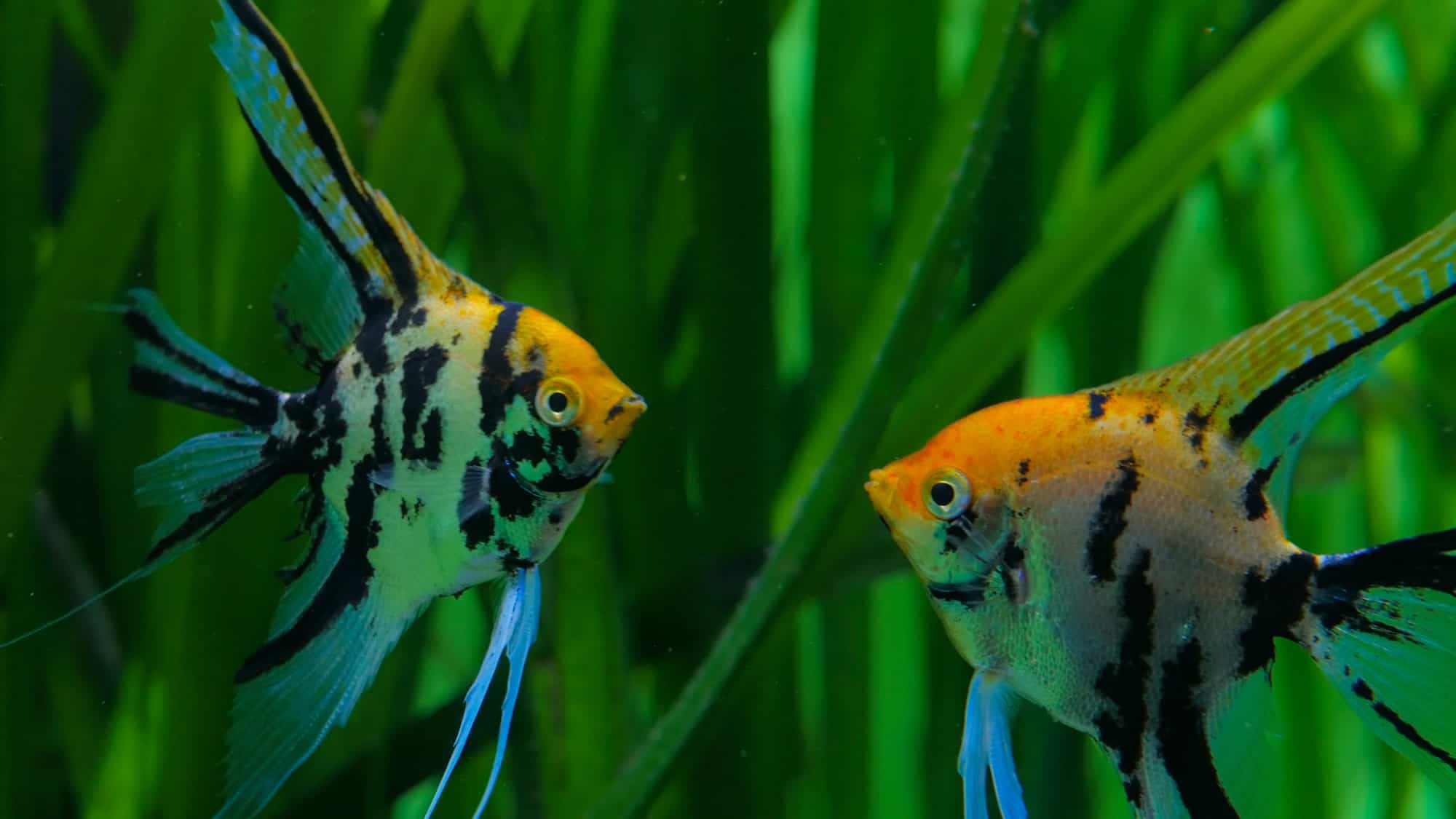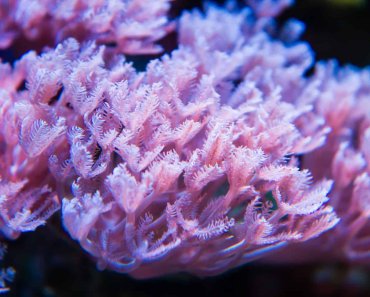Angelfish are intelligent and intriguing fish with complex behavior and courtship rituals. If you’ve seen your angelfish locking lips together, the chances are that it’s a male and female showing that they’re preparing to spawn together.
But since locking lips can also be practiced by two males fighting one another for dominance, you need to know how to tell which kind of ‘kissing’ it is!
Here I’ll explain how to understand your angelfish’s courtship and aggressive behavior and also share some top tips on how to set up a breeding tank for your freshwater angelfish. Let’s go!
Angelfish Lip Locking During Breeding
If you’ve imagined that your angelfish kissing is a romantic gesture, you’re half right! Kissing is an important part of an angelfish’s courtship ritual.
Locking lips between male and female angelfish is a sign that the female has accepted the advances of the male, and that the two will probably be ready to spawn together soon.
When locked into a courtship kiss, you may also see the two fish pushing and pulling each other around the aquarium. This is probably a further demonstration of strength – the male angelfish needs to prove he really is strong and healthy enough to raise a brood with the female fish.
Angelfish Kissing as Aggression Between Males
Kissing in angelfish can also be a sign of aggression. Sometimes, male angelfish will lock lips with each other as they spar and attempt to establish a hierarchy.
This is especially likely when there is a mixed group of angelfish, and males and females are jostling for potential mates. Since angelfish prefer to choose their own partners, many experts advise getting a large group of at least 6 young angelfish to begin with, so that males and females can pair off naturally as they would in the wild.
But to establish a hierarchy that will inform which partners they choose, males need to display their strength. Lip-locking wrestling contests and aggressive lunges towards each other, therefore, are a common behavior between males in angelfish schools.
Is My Angelfish Male or Female?
If you haven’t determined whether your angel fish are boys or girls, you’ll need to find out to know whether the kissing behavior is a mating ritual or rivalry between males. Here are the best ways to tell:
- Adult male Angelfish are generally a little larger than female angels. They also tend to have a more circular shaped body compared to the angular outline of the female.
- Mature males have a ‘nuchal hump’ – a raised hump on their forehead, which is lacking in females.
- Mature males and females have differences in their visible genitalia. The male has a pointed, thin breeding tube on their underside, whereas females have a more rounded, blunt ovipositor tube instead.
- Males are generally more aggressive than females and will fight with each other, and may also fight with female angelfish to attempt forced mating.
- Females are generally less aggressive, except at breeding time when they will behave fiercely towards unwanted males and also other fish that pose a threat to their eggs and young (if they become a good parent!).
Other Signs That Your Angelfish are Ready to Breed
As well as locking lips, there are some other signs to watch out for that signify that your angelfish could be spawning soon.
- The male and female will also exhibit affectionate behavior towards each other, pecking lightly at one another, flashing their fins, and spending most of their time with each other.
- As well as becoming more aggressive, females will develop a bulge in their bellies.
- The pair will eventually choose a spawning site – preferably a fairly vertical slate or piece of rock, and clean it together.
How To Set up a Breeding Tank for Your Angelfish
If you notice the above courtship behavior in your angelfish and decide that you want to raise baby angelfish, you’ll need to set up a specially designated breeding tank for them.
- Choose a tank size of at least 20 gallons. 30 gallons will give both adults (if included) and fry more swimming space and so is more preferable in my opinion.
- Set up a sponge filter and make sure the tank is well-cycled before introducing fish.
- Use a water testing kit and set water parameters to between pH 6 – 6.9, and set your aquarium heater’s thermostat to 80-82°F.
- Feed the parents on protein-rich balanced diet that includes live and frozen foods such as bloodworms, black worms, brine shrimp, mosquito larvae, and mysis shrimp to encourage successful spawning.
- Separate Your Angelfish pair or Their Eggs. You can either place your angelfish in a separate tank to spawn or wait for them to spawn in the main tank and then move the slate, plant, or rock that they’ve laid their eggs on to the breeding tank.
- If your angels are perfect parents, they can be left in the breeding tank with their young. Most of the time, however, it’s best to remove them once spawning is complete so that they don’t eat their own eggs or fry when they’ve hatched.
- Raise angelfish fry on ground-up flake food or a specially formulated infusoria. Keep the tank clean with frequent partial water changes.
Do Angelfish Mate for Life?

Although female angelfish choose a single partner to mate with, they won’t necessarily stay with that partner for their entire life. If other male angels enter the tank between mating seasons, the female might decide to choose another partner if he appears to be stronger and more dominant.
This can create a lot of friction in the tank, as the male from the existing pair may attempt to fight off other males that pose a threat to his mating rights.
If the female rejects her old partner, he may also become aggressive towards her, trying to reinstate their partnership by force. This will normally lead to fiercely defensive behavior from her as she reasserts her freedom of choice. Pretty complex behavior, right?!
You can probably see that introducing more males after an angelfish partnership is established can create many problems, so unless you wish to interrupt the harmonious relationship of your angelfish, I wouldn’t recommend introducing additional males to a tank with a breeding pair.
Conclusion
Angelfish kissing is a fascinating piece of behavior that’s normally due to mating interaction. Sometimes lip-locking can be performed by males jostling for a dominant position in the tank or to win the right to pair with a particular female.
If your pair of angelfish are kissing and you want to raise their young, you’ll need to get a separate breeding tank for them. Click here to check out our guide to the best 30-gallon tanks that you can use for breeding them.


























